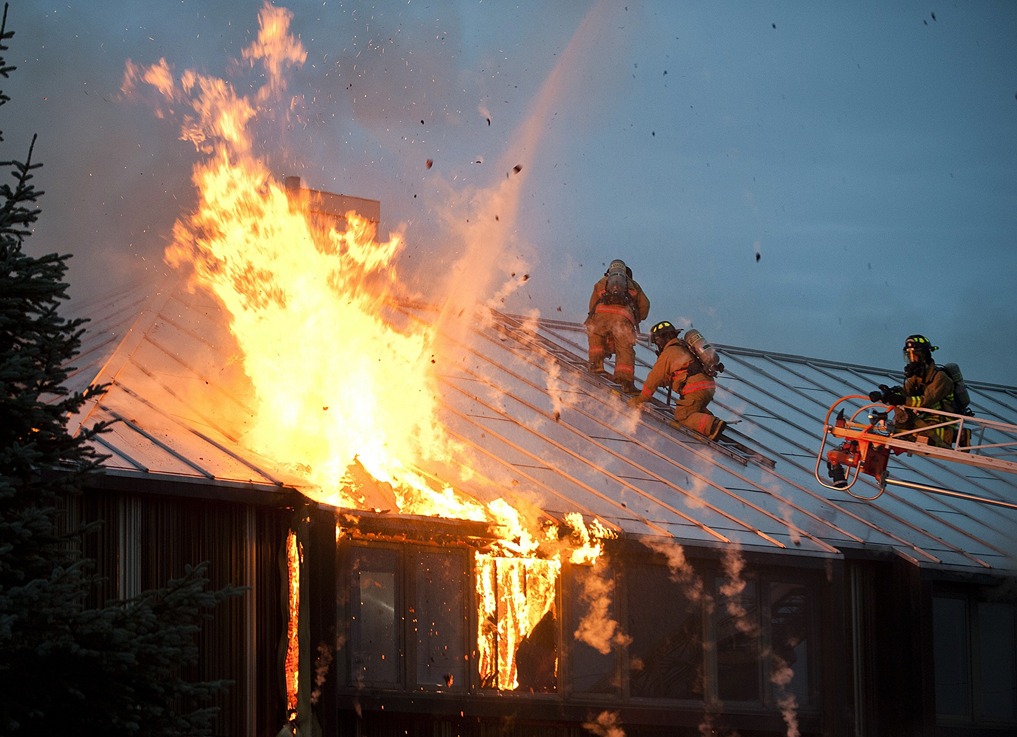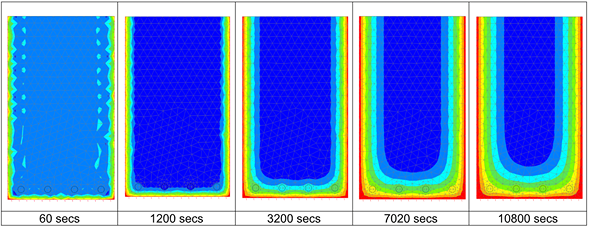
“Fire can kind of do whatever it wants,” says structural engineering PhD student Lauren Llantero.
That unpredictability, she explains, makes it difficult to understand and quantify the effects of fire on different building materials. Add in variables about the type of fuel and the fire duration and the situation gets even more complex.
“I like figuring out solutions to challenging problems,” says Llantero, who credits her problem-solving mindset with pushing her toward graduate school and her work with structural engineering faculty member Spencer Quiel, an expert in the resistance of large structures to extreme loads. “I like the way that it makes my brain work.”
To integrate new materials—such as mass timber, fiber-reinforced polymers, and higher strength steel—into construction, they must be tested for strength and durability. Because fire experimentation takes a long time to conceptualize, fire-related testing often doesn’t keep pace with the rapid development of building materials.
“Thermal effects due to fire aren’t always considered at the forefront of research because not every university can test these effects,” says Llantero. “So it’s important for us to explore this area because Lehigh has the unique tools to do so.”
Putting predictions to the test
Llantero’s research combines computational and experimental methods. Facilities at Lehigh’s Advanced Technology for Large Structural Systems (ATLSS) Engineering Research Center enable this type of experimentation.
First, she computes fire curves into a computer program called SAFIR. Design fire curves replicate natural fire exposures on structural elements to illustrate the extent of exposure that can be endured overtime, Llantero says.
“SAFIR is a finite element software, meaning it breaks a beam into a bunch of smaller areas and then analyzes each area individually based on the heat flux that flows through it and the areas surrounding it,” she says.
The software allows users to manipulate certain variables such as the material and strength of the beam. The files are fed into a post processor, which creates a visual representation of how the section heats up over time. This computational process analyzes the effect heat is predicted to have on various materials.

This is a sequence of screenshots captured by Llantero of the thermal gradient in a reinforced concrete beam that is exposed to an ASTM E119 fire curve (the standard in testing and design). At 60 seconds, the beam is barely heated, so the section is, for the most part, at room temperature. At three hours, the edges of the beam are much hotter due to fire exposure.
After her computational methods provide her with predicted outcomes, she puts them to the test through rounds of experiments. She uses furnaces to simulate fire during physical experimentation– a process that requires intensive formulation and a clear plan of execution.
“The time leading up to the actual experiment can range from months to even a year because you want to make sure you think about every detail in your process and coordinate with the right people,” says Llantero.
Within ATLSS, the hub of Llantero’s work, “there is a big furnace that can be used to test bigger beams and then a smaller one that can be used to test smaller concrete cylinders,” she says.
Llantero plans to follow this process using both reinforced concrete beams and fiber-reinforced concrete beams to conduct comparative analysis. Her goal is to decipher whether fiber-reinforced concrete beams can be used to replace typically reinforced concrete beams.
Her research aims to uncover the most effective material to use moving forward, considering what is most sustainable and cost-effective yet maintains high levels of design and structural integrity, she says.
Sparking a new interest
As an undergraduate at the University of Notre Dame, Llantero developed a strong foundation in civil engineering but had not settled on a specific research path for her graduate studies. She saw opportunities in Lehigh’s sophisticated facilities and varied courses and research areas to hone in on more niche areas of the discipline as a PhD student.
“There are a lot of different classes that you can choose to explore civil engineering in a deeper way,” she says.
In her second semester, she took a course on Structural Fire Engineering, which propelled further exploration of the effects of this structural hazard.
“Coming into Lehigh, I actually didn’t know anything about fire,” says Llantero. “A lot of this is new to me, so I enjoy being able to learn more about a side of civil engineering that I hadn’t been exposed to before.”
While Llantero has chosen her own path, in a way, she’s treading in the footsteps of her father, who specialized in combat engineering—what she describes as “reverse civil engineering”—for the Marine Corps. The specialty focuses on finding the weak points in structures and attacking them until the structure crumbles, with the goal of diminishing the vulnerability of buildings and infrastructure in extreme events, she says.
“I was very curious about what he did, and it wasn’t until he explained to me what exactly engineering was that I realized that was something I could be good at,” she says.
Throughout her father’s time in the Marines, Llantero moved around to five different U.S. states and two foreign countries, attending a total of seven different schools by the time she was a high school graduate. Now, a town not far from Honolulu, Hawaii, is where she calls home.
“Being a military child definitely makes you stronger,” says Llantero. Adapting to constant change throughout her upbringing, she says, allowed her to gain resilience that continues to guide her through life.
She admits that civil engineering doesn’t always come easy. In the future, she foresees returning to academia to assist students on their academic paths.
In the meantime, Llantero is motivated to help others gain insight on the types of problems faced by civil and structural engineers through her research endeavors.
“This type of research is unique compared to some of the other types of research that you see on steel or concrete beams,” she says, “so my journey so far has gotten me excited to really dig into my research in the future.”
—Brooke Bisceglia ’23 is a student writer for the P.C. Rossin College of Engineering and Applied Science
Header Image by David Mark from Pixabay

